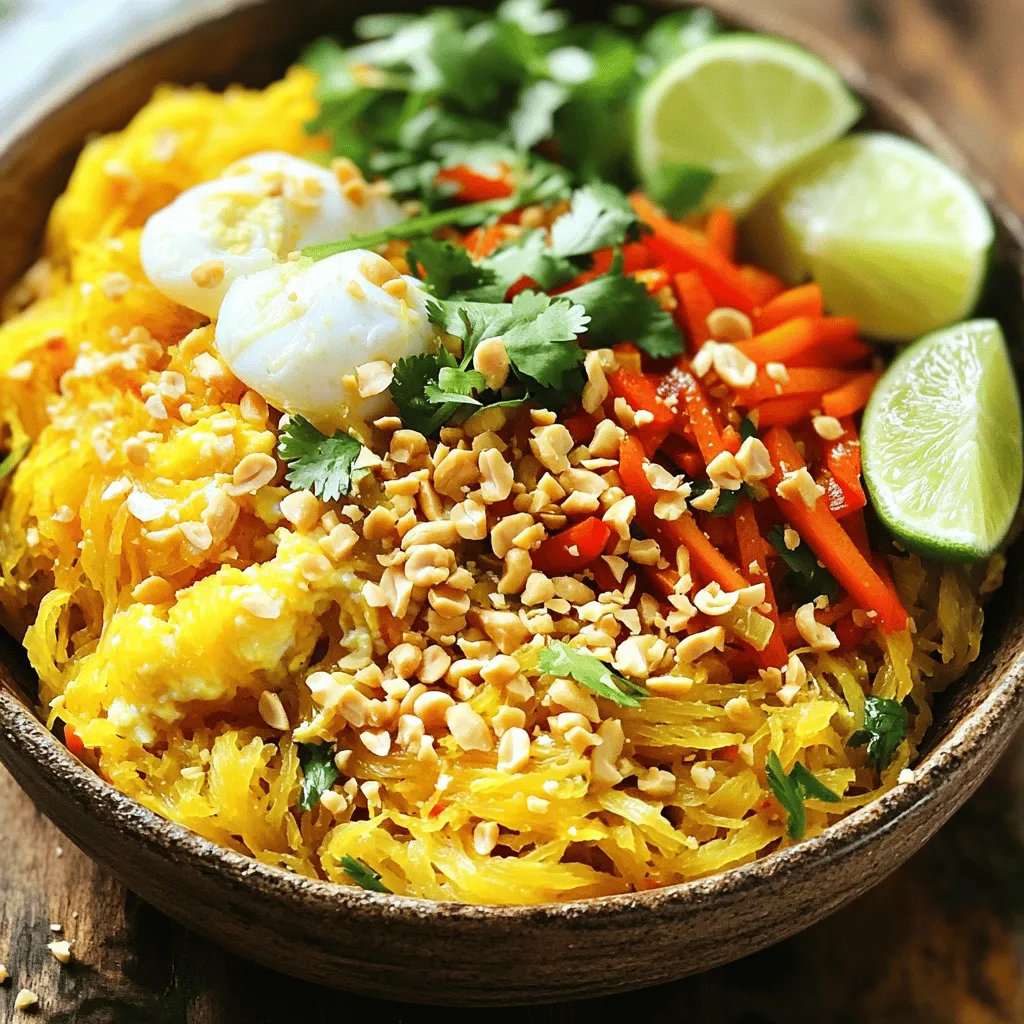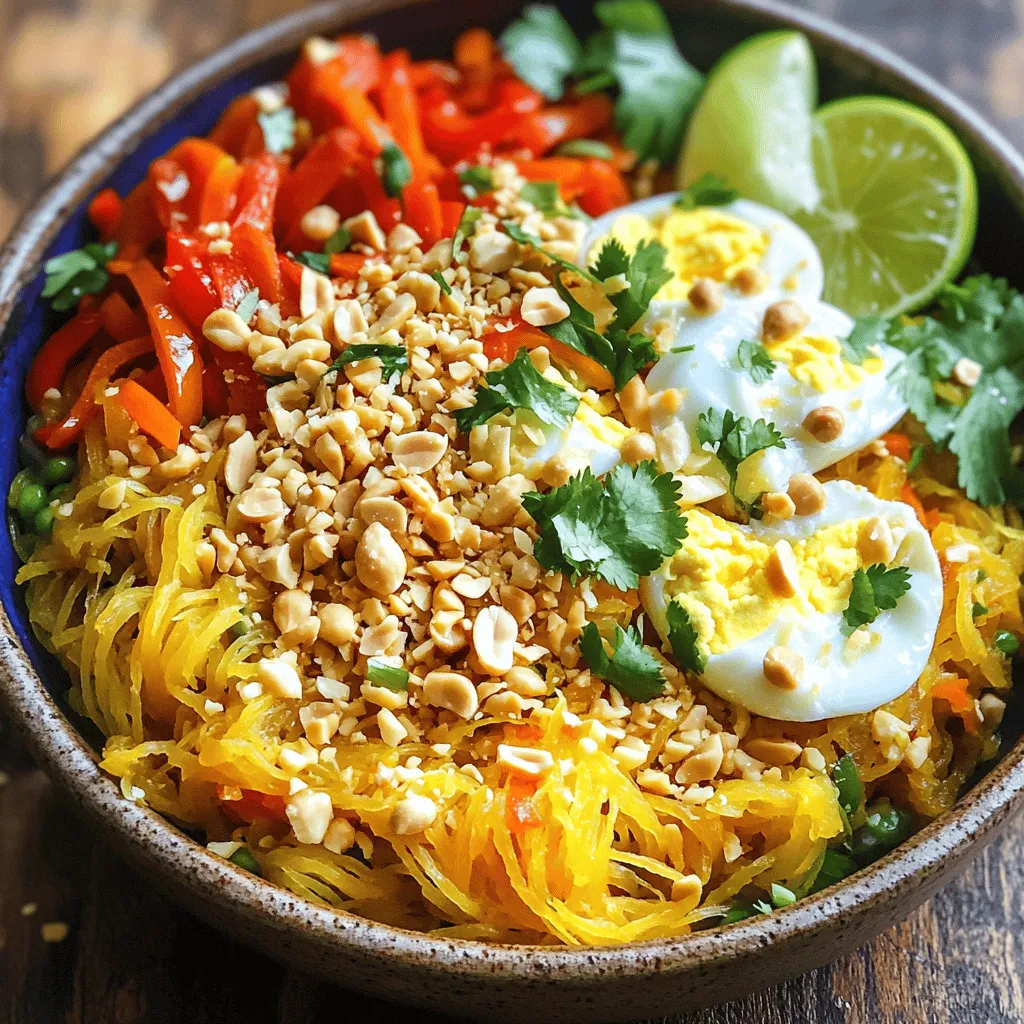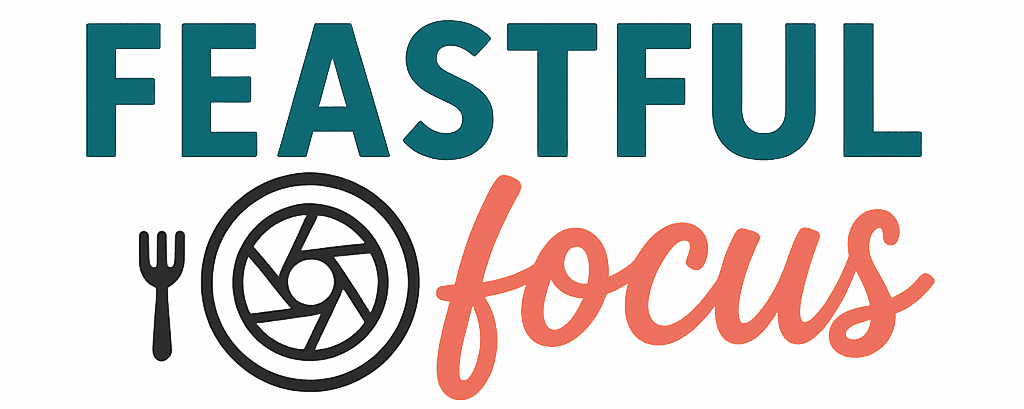Are you ready to try a fresh twist on a classic dish? My Spaghetti Squash Pad Thai is both tasty and wholesome. It delivers all the flavors you love, minus the carbs. With easy steps and simple ingredients, you’ll have a delightful meal in no time. Let’s dive into making this fun and healthy alternative that’s perfect for any dinner! You’ll love how it fits into your busy life!

Ingredients
Main Ingredients for Spaghetti Squash Pad Thai
To create a tasty Spaghetti Squash Pad Thai, gather these key ingredients:
– 1 medium spaghetti squash
– 2 tablespoons vegetable oil
– 2 cloves garlic, minced
– 1 red bell pepper, thinly sliced
– 1 cup bean sprouts
– 2 green onions, sliced
– 1 carrot, julienned
– 2 large eggs, lightly beaten (or flax eggs for a vegan alternative)
– 3 tablespoons tamari or soy sauce
– 1 tablespoon creamy peanut butter
– 1 tablespoon fresh lime juice
– 1 teaspoon sugar
– Crushed peanuts and fresh cilantro for garnish
– Lime wedges for serving
These ingredients blend together to create a vibrant dish. The spaghetti squash adds a unique texture, while the veggies offer color and crunch.
Optional Garnishes
For extra flavor and flair, consider these optional garnishes:
– Crushed peanuts
– Fresh cilantro leaves
– Lime wedges
Using these garnishes enhances the dish’s visual appeal and taste. They help balance the flavors and add a fresh touch.
Substitutions for Dietary Preferences
You can easily modify this dish to suit dietary needs. Here are some substitutions:
– Use zucchini noodles instead of spaghetti squash for a low-carb option.
– Swap eggs for tofu or chickpeas to make it vegan.
– Choose coconut aminos instead of soy sauce for a gluten-free option.
These substitutes make the recipe flexible. You can enjoy this dish no matter your dietary preferences.
Step-by-Step Instructions
Preparing the Spaghetti Squash
To start, preheat your oven to 400°F (200°C). Cut your spaghetti squash in half lengthwise. Use a spoon to scoop out the seeds. Place the squash halves cut side down on a lined baking sheet. Roast in the oven for 30 to 40 minutes. The flesh should feel tender when done. Let it cool for a few minutes. Now, take a fork and shred the flesh into strands. This will give you those lovely spaghetti-like noodles.
Cooking the Vegetables
Next, take a large skillet and heat vegetable oil over medium heat. Add minced garlic and cook for about 30 seconds. You want it to smell great, not burn. Now, add the red bell pepper and julienned carrot. Stir-fry them for 3 to 4 minutes. You want them to soften and look vibrant. This mix adds color and crunch to your dish.
Incorporating the Eggs & Sauce
In the skillet, push the veggies to one side. Pour in the lightly beaten eggs on the other side. Scramble them until cooked. Then, mix the eggs with the veggies. This makes a tasty base. Now, add the shredded spaghetti squash and fold it in. In a small bowl, whisk together tamari (or soy sauce), peanut butter, lime juice, and sugar. Drizzle this sauce over your mixture and toss it all together. Finally, fold in the bean sprouts and green onions. Cook for another minute to warm everything. Your dish is now ready to enjoy!
Tips & Tricks
Techniques for Perfect Squash Cooking
To cook spaghetti squash perfectly, choose a medium-sized squash. Cut it in half lengthwise and scoop out the seeds. Place it cut-side down on a baking sheet lined with parchment paper. Roast it at 400°F (200°C) for 30-40 minutes. You want the flesh to be soft enough to shred easily with a fork. Let it cool before using a fork to create those lovely spaghetti-like strands.
Tips for Making the Sauce
For the sauce, mix tamari or soy sauce with creamy peanut butter, lime juice, and a bit of sugar. Whisk until smooth for the best flavor. Pour it over the squash and veggies in the skillet. Toss everything well so each strand is coated evenly. This step makes your dish flavorful and rich.
Serving Suggestions and Presentation Ideas
When serving your spaghetti squash Pad Thai, use a large white platter for a clean look. Garnish generously with crushed peanuts and fresh cilantro. Place lime wedges around the dish for color and zest. This not only makes it pretty but also adds a fresh taste. For a fun touch, serve it in individual bowls, letting guests customize with extra lime or peanuts.

Variations
Vegan Alternatives for Eggs
If you want a vegan dish, you can skip the eggs. Instead, use flax eggs. To make a flax egg, mix one tablespoon of ground flaxseed with three tablespoons of water. Let this sit for five minutes until it thickens. This mixture will help bind your ingredients just like eggs do.
Gluten-Free Options
This recipe is naturally gluten-free when you use tamari instead of soy sauce. Tamari is made without wheat, making it a great choice. Always check the labels to ensure your other ingredients, like peanut butter, are gluten-free too.
Adding Proteins: Tofu, Chicken, or Shrimp
You can boost the protein in your dish easily. For a vegetarian option, add firm tofu. Cut it into cubes and sauté it until golden. For a meaty touch, add chicken or shrimp. Cook them in the skillet before adding the vegetables. This will enhance the flavor and keep everything well-balanced.
Storage Info
How to Store Leftovers
To keep your Spaghetti Squash Pad Thai fresh, store it in an airtight container. Let it cool first, then place it in the fridge. It will last for up to three days. Keeping the sauce and squash separate helps maintain texture.
Reheating Instructions
When you’re ready to enjoy leftovers, heat them in a skillet over medium heat. Add a splash of water or oil to prevent sticking. Stir well until everything is hot. You can also microwave it in a bowl with a lid. Heat for one to two minutes, stirring halfway through.
Freezing Spaghetti Squash Pad Thai
You can freeze this dish if you need to store it longer. Pack it in a freezer-safe container after cooling. It’s best used within three months. To thaw, leave it in the fridge overnight. Reheat it as described above for the best taste and texture.
FAQs
How do I know when the spaghetti squash is done?
You can tell the spaghetti squash is done when it is tender. To check, poke it with a fork. If it easily pierces the flesh, it’s ready. The skin should feel soft to the touch. After roasting, let it cool a bit. Then, use a fork to shred it into strands. This creates that lovely noodle-like texture we want.
Can I use traditional noodles instead of spaghetti squash?
Yes, you can use traditional noodles. However, this changes the dish’s character. Spaghetti squash gives a unique twist to Pad Thai. It makes the dish lighter and adds more fiber. If you choose noodles, cook them as directed. Then, mix them with the same tasty sauce and veggies.
What can I substitute for peanut butter?
You can use almond butter or sunflower seed butter instead. These options still provide a nice creaminess. If you want a nut-free choice, try tahini. It has a different flavor but works well. You can also add more lime juice for a tangy kick.
Spaghetti squash Pad Thai offers a tasty twist on the classic dish. We explored the main ingredients and helpful tips for a smooth cooking process. You learned how to prepare the squash, cook the veggies, and make the sauce. We discussed substitutions for dietary needs and storage advice for leftovers. Remember, variations can cater to different diets too. I hope you feel inspired to make this healthy meal. Enjoy exploring your own ideas with this recipe!

